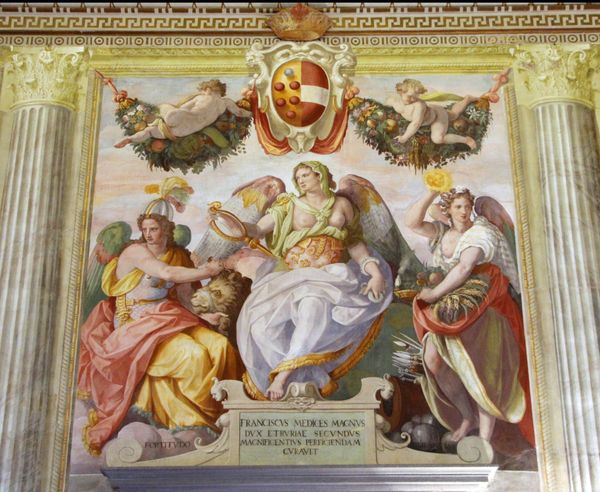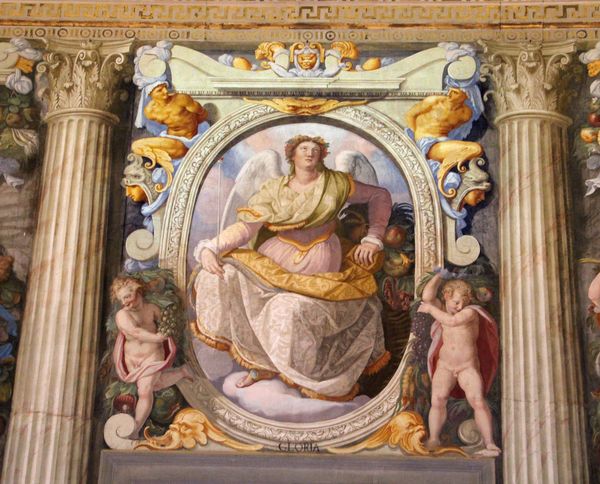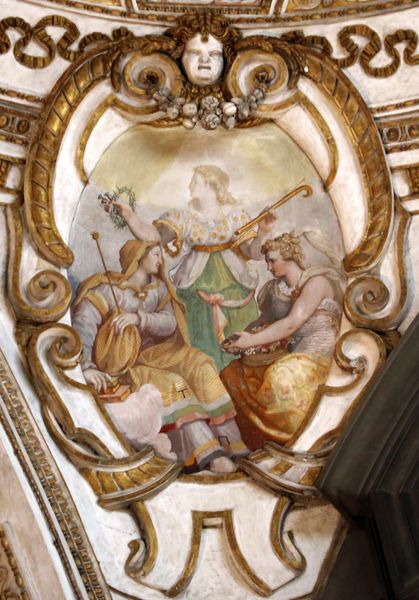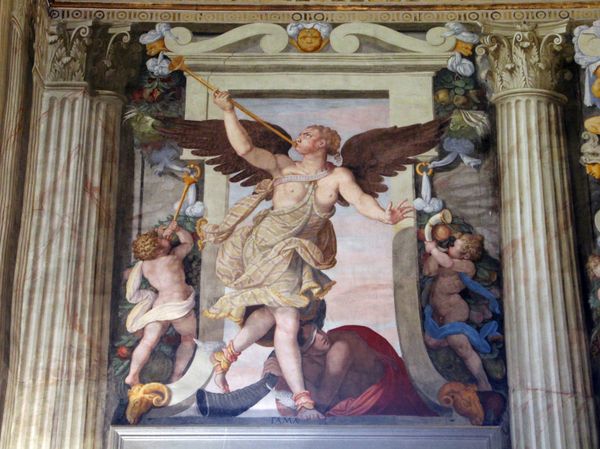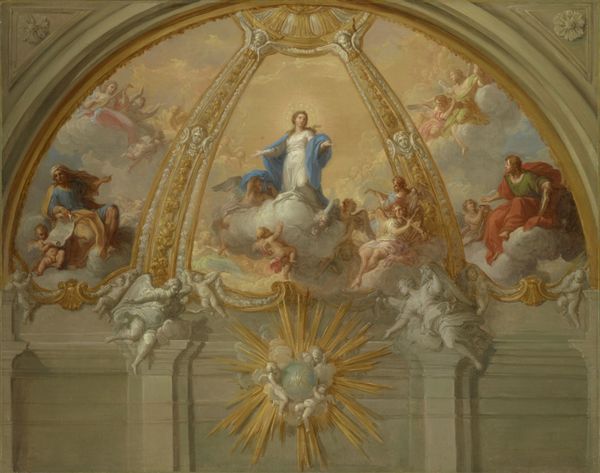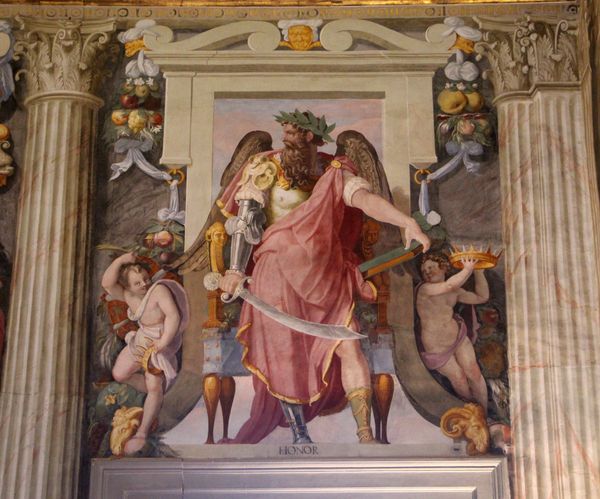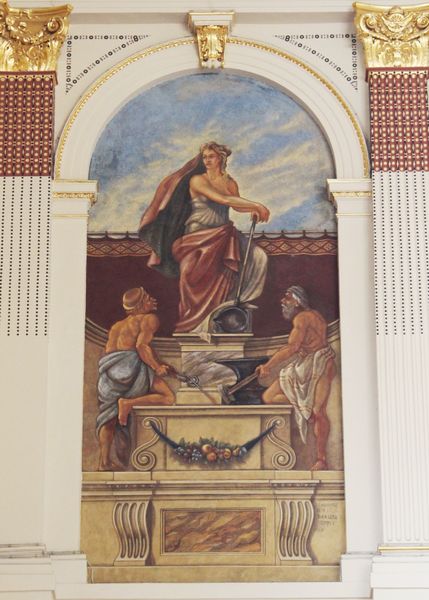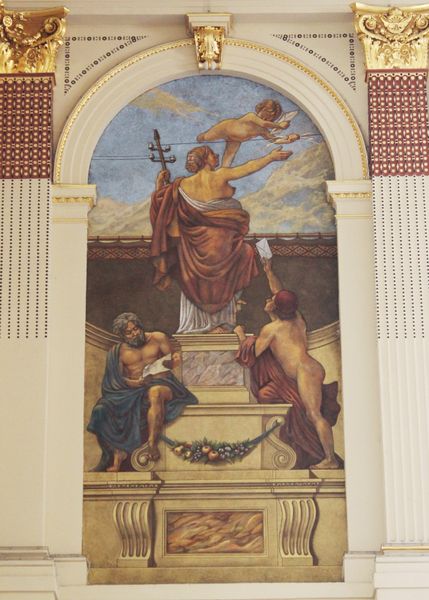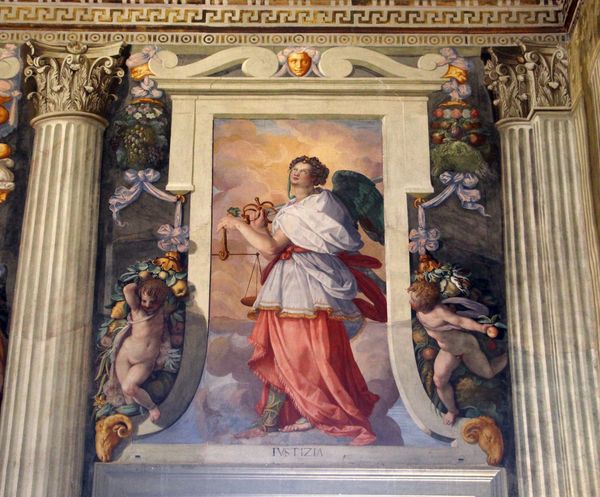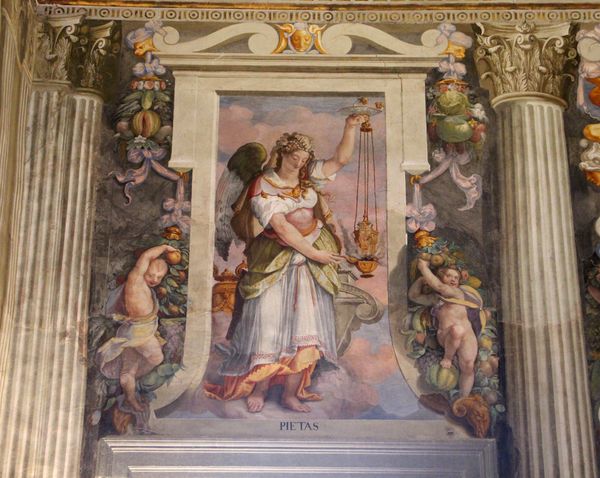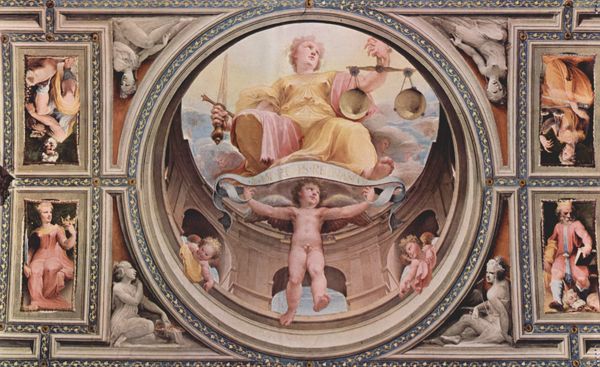
painting, oil-paint, fresco
#
allegory
#
painting
#
oil-paint
#
sculpture
#
mannerism
#
fresco
#
oil painting
#
history-painting
Copyright: Public domain
Curator: Let's discuss "Magnanimity, Magnificence, and Liberality," a painting executed by Alessandro Allori around 1582. What strikes you first? Editor: Honestly, the overwhelming sense of privilege emanating from the fresco is quite jarring. It screams of opulence and a very particular, and exclusive, kind of power. Curator: It’s intended to, absolutely. Allori painted this piece within a larger decorative program commissioned to honor Pope Leo X. Consider the inscription – "Leo Decimus Pontifex Maximus." This artwork, as I interpret it, portrays virtues that are supposed to be emblematic of the pontiff. Editor: Exactly, virtues presented as inherently intertwined with religious and class power. The allegory is clear: these airborne figures are practically endorsements of the pontiff. Even their poses, suspended and almost ethereal, separate them from earthly realities, let alone any sense of lived precarity that others at the time faced. Curator: But isn't there a psychological reassurance here too? Winged allegorical figures offer something more lasting and perhaps universal. They embody, in a tangible visual form, the promise of certain ideals—grandeur, generosity—that perhaps resonate across eras, even if unequally distributed? Editor: While those virtues are valuable in a theoretical sense, framing it in that context is a historically ignorant approach. Power dictates how "virtue" gets expressed; this is less an honest rendering of human aspiration and more a veneer to legitimize that authority. Magnanimity from above often just reinforces existing power structures and suppresses dissent. The "liberality" being referenced wouldn't include redistributing land rights. Curator: But isn't that the beauty of art—that symbols and their meanings shift over time? Even with the loaded nature of papal commissions, a contemporary viewer could look at this, strip it bare of that original context, and reinterpret the generosity being shown. Symbols do contain power, but power is transient. Editor: True, images take on lives and meanings outside their intended creation, that’s an important consideration. Looking closely allows us to deconstruct it, critique the inherent biases, and then, yes, consider it on our terms. Thank you for pointing out new meanings and symbolism. Curator: And thank you for offering me an understanding of it within a political and socioeconomic reality.
Comments
No comments
Be the first to comment and join the conversation on the ultimate creative platform.
